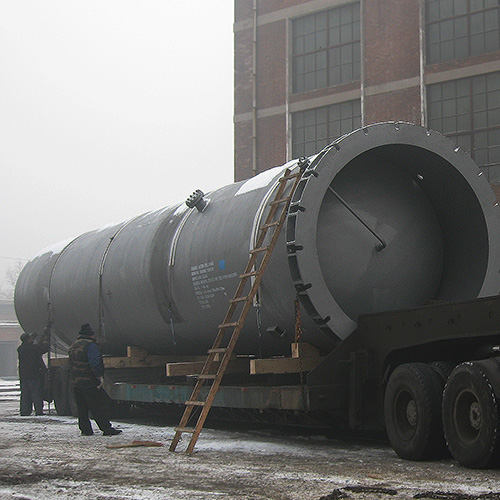The failure mode is the design basis of the pressure vessel, and the design method (guideline) must be directed to the failure mode. The first step of the pressure vessel design should be to determine the failure mode that the pressure vessel may have. For the Class III pressure vessel, the design is also required to issue risk assessment reports including major failure modes, risk controls, etc. The evaluation of the pressure vessel inspection results is also based on the failure mode.
1. Short term failure modes
• Brittle fracture -- The pressure vessel has no significant plastic deformation and the stress in the wall is much less than the strength limit of the material or even below the yield limit of the material. The main cause of brittle fracture is the embrittlement of materials (inappropriate material selection, improper material processing, strain aging, poor operating environment) and defects in the material itself.
• Ductile rupture -- Under the action of pressure and other loads, the generated stress value reaches or approaches the strength limit of the wall and causes fracture. Generally, the main reason for the ductile fracture of carbon steel pressure vessels is that the wall thickness is too thin (the design wall thickness is insufficient or the thickness is thinned due to corrosion), the internal pressure is too high or the material selection is improper, and the installation does not meet the safety requirements.
• Leakage at joints due to excessive deformations -- Leakage caused by the failure of the sealing surface of the pressure vessel, or the loosening of the nozzle may cause combustion, explosion and poisoning accidents, and serious environmental pollution.
• Crack formation or ductile tearing due to excessive local strains
• Instability-elastic, plastic or elastic-plastic -- Under the action of compressive stress, the failure caused by the sudden loss of the original regular geometry of the pressure vessel is called instability failure. An important feature of the elastic instability of the pressure vessel is that the elastic deflection is not proportional to the load, and the critical pressure is independent of the strength of the material, mainly depending on the size of the pressure vessel and the elastic properties of the material, but when the stress level in the pressure vessel exceeds the yield point of the material and inelastic instability occurs, the critical pressure is also related to the strength of the material.
2. Long term failure modes
• Creep rupture -- The pressure vessel is loaded for a long time at high temperature, and the material undergoes slow plastic deformation with time. The plastic deformation is accumulated for a long time, resulting in significant thickness reduction or bulging deformation, which eventually leads to pressure vessel fracture. When the pressure vessel creeps, the wall temperature generally reaches or exceeds 25% to 35% of the melting temperature of the material. The amount of deformation of the creep fracture depends on the toughness of the material, and the stress value at the time of fracture is lower than the strength limit at the temperature at which the material is used.
• Creep-excessive deformations at mechanical joints or resulting in an unacceptable transfer of load
• Creep instability -- The deformation that gradually accumulates over time is creep deformation, and when the creep deformation develops to a certain extent, and creep instability occurs.
• Erosion, corrosion -- When the material of pressure vessel, like carbon steel tank, under the action of corrosive medium, due to uniform corrosion caused by wall thickness reduction and material structure change or local corrosion caused by pits, the mechanical properties of the material is reduced, the pressure vessel will break since its bearing capacity is insufficient. The corrosion mechanism of the pressure vessel is chemical corrosion and electrochemical corrosion. Corrosion forms include uniform corrosion, pitting corrosion, intergranular corrosion, stress corrosion, crevice corrosion, hydrogen corrosion, and bimetallic corrosion, etc.
• Environmentally assisted cracking such as stress corrosion cracking, hydrogen induced cracking, etc.
3. Cyclic failure modes
• Progressive plastic deformation
• Alternating plasticity
• Fatigue under elastic strains(medium and high cycle fatigue) or under elastic-plastic strains (low cycle fatigue)
• Environmentally assisted fatigue


 English
English Español
Español русский
русский